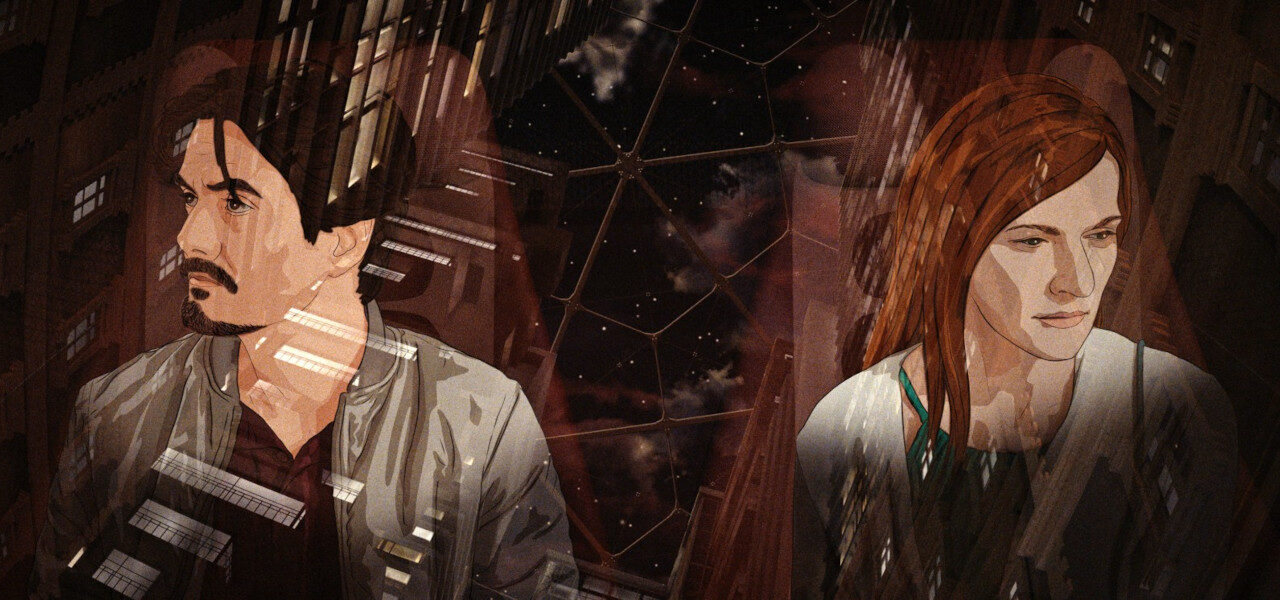

Why The Filmmakers Of Environmental Sci-Fi Feature ‘White Plastic Sky’ Used A Hybrid Style
This year’s Berlinale is packed with animated titles. Among the most alluring is the Hungary-Slovakia co-production White Plastic Sky (Műanyag égbolt) from filmmakers Tibor Bánóczki and Sarolta Szabó.
The film is a science fiction fable about a world where all plant and animal life outside of a protective bubble has died off. Within the utopian biodome, nobody is allowed to live past the age of 50. When the ripe old age comes around, each person is implanted with a chip that morphs them into a plant that provides fresh oxygen and food for the community.
The process is obligatory at 50, but individuals can volunteer at any age. After experiencing a tragedy, young Nóra decides she would rather end her human life and begin the next phase as a plant. Her husband Stefan, a staunch believer in the system up to this point, can’t deal with his partner’s decision and embarks on a quest to stop Nóra from transforming.
White Plastic Sky features a blend of hand-drawn rotoscope and cg animation styles that help it feel futuristic and otherworldly while maintaining enough commonality to our reality that one can’t help but empathize with its protagonists. The hybrid art style also mimics well the film’s hybrid plant-human storyline and provides some unforgettable visual treats.
Salto Films in Hungary and Artichoke in Slovakia produced the feature which is world-premiering in Berlin’s Encounters section. It’s being sold globally by Films Boutique.
We spoke with Bánóczki and Szabó on the occasion of their film’s premiere. They explained their decision to mix animation styles for their film, the difficulties that caused, and the extra steps they took to ensure life-like performances from their animated protagonists.
Cartoon Brew: What was your writing/storyboarding process? How long did it take to make your idea a reality?
Tibor Bánóczki and Sarolta Szabó: We started to develop the story in 2016. We worked on every aspect of the film together; even the smallest thing had to be approved by both of us. Our writing process is that one of us starts to write a scene based on a basic outline. When the first draft of the scene was finished, it was passed over to the other one of us who works on it more, making corrections and comments. Then we would send it back and forth until we felt we got it right. During this process, we often consulted our dramaturge Rita Domonyi and talked each scene through many times. We used the same process for storyboarding; in this process the editor Judit Czako) was involved too.
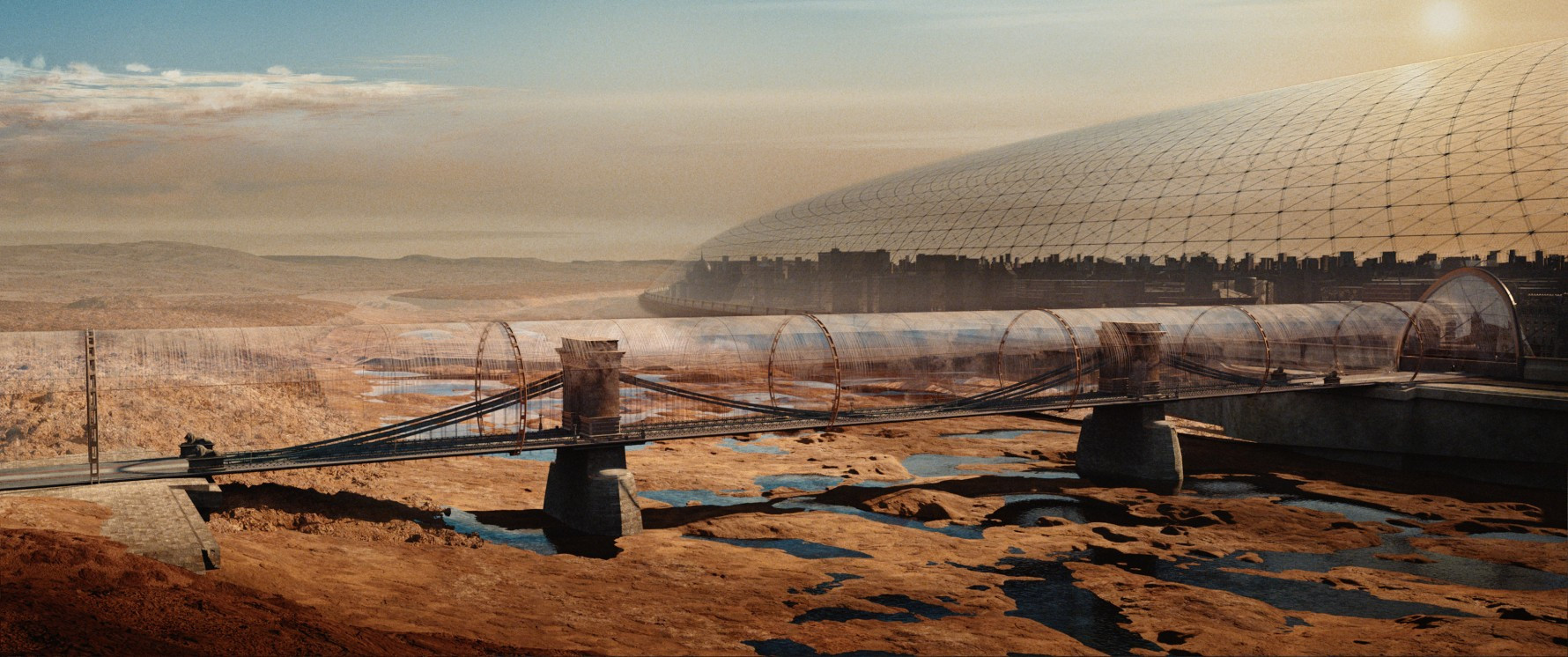
What kinds of references did you rely on for the characters’ design and animation? What made you decide to go with rotoscoping for the characters’ performances?
Bánóczki and Szabó: We used rotoscope animation for the film. We felt this was the best way to express our characters’ animations which we wanted to be as realistic as possible. Obviously, we’ve seen many animated films using the technique, but we had to find our own method to animate the scenes. Our animators drew every second or third frame by hand using a digital tablet.
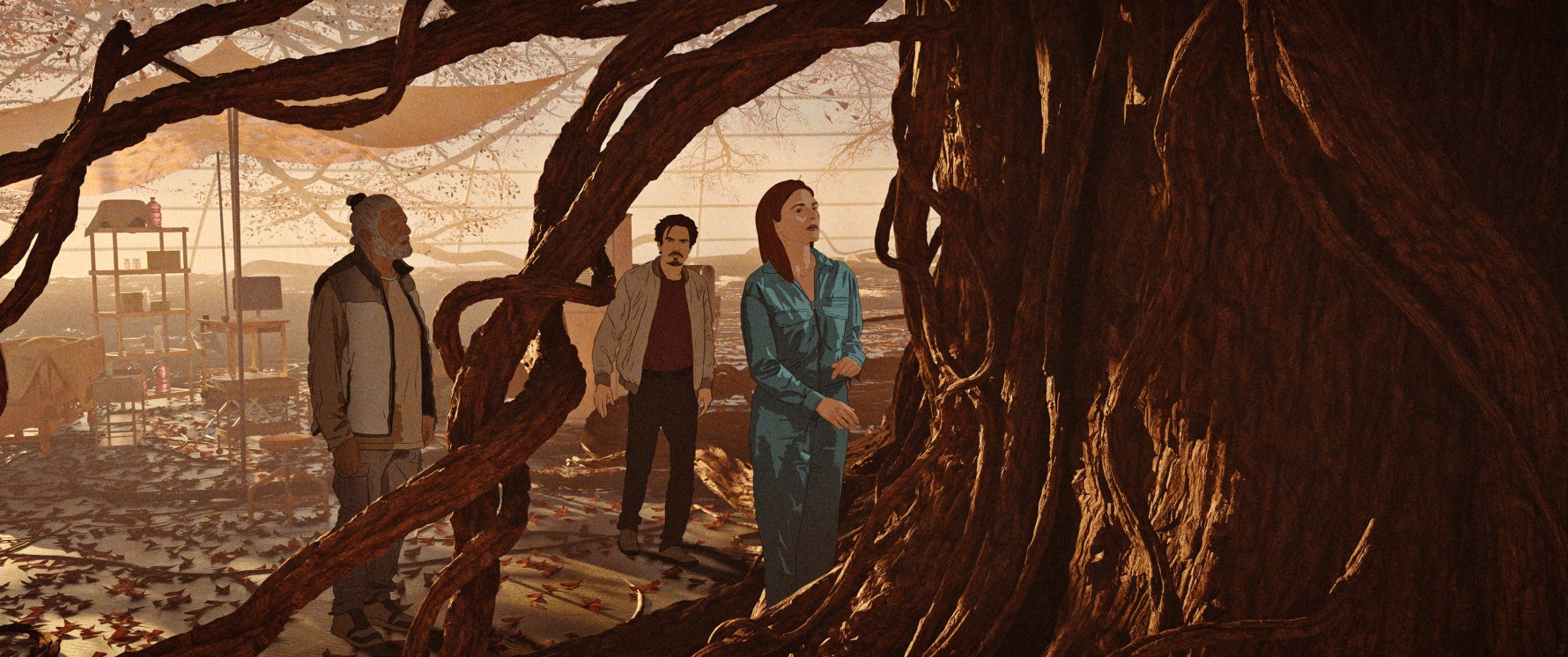
In addition to rotoscope, you also used cg. Why did you choose a hybrid approach?
Bánóczki and Szabó: Using a mixed animation technique and rotoscope felt a good match for the film’s theme conceptually. Exploring different life forms (humans and plants) the film is also a kind of hybrid itself, existing between animation and live action. For the backgrounds, we used cg animation because it was really important to create a believable world and also gave a lot of freedom for the cinematic language, the lighting, texturing, and camera movements we wanted to use.
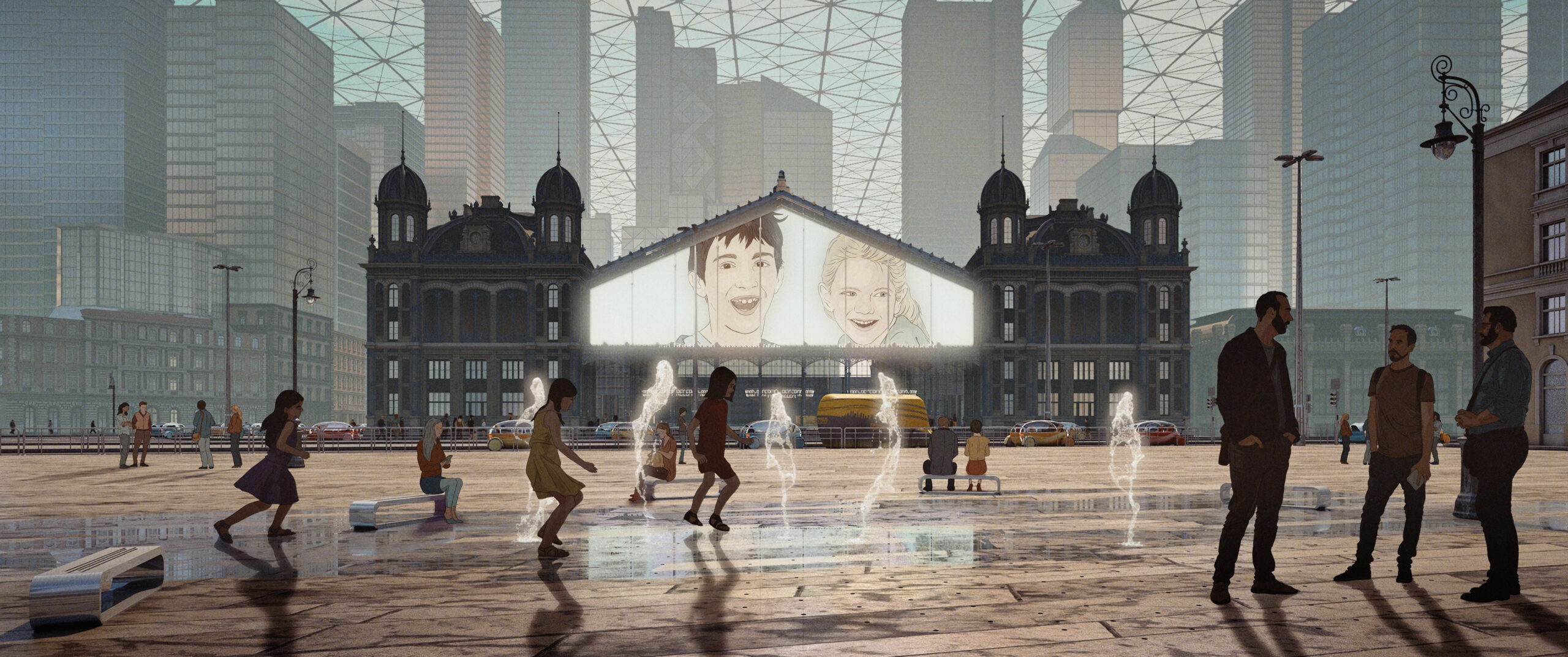
What were the big challenges of using a rotoscope technique?
Bánóczki and Szabó: To execute the animation, we needed people with very strong drawing skills and anatomy knowledge. It was a very difficult and labor-intensive process to animate every scene and keep the actors’ expressions as much as possible, even the smallest and most subtle facial cues. The most difficult task was to find a team that could animate and draw the scenes at this high level.
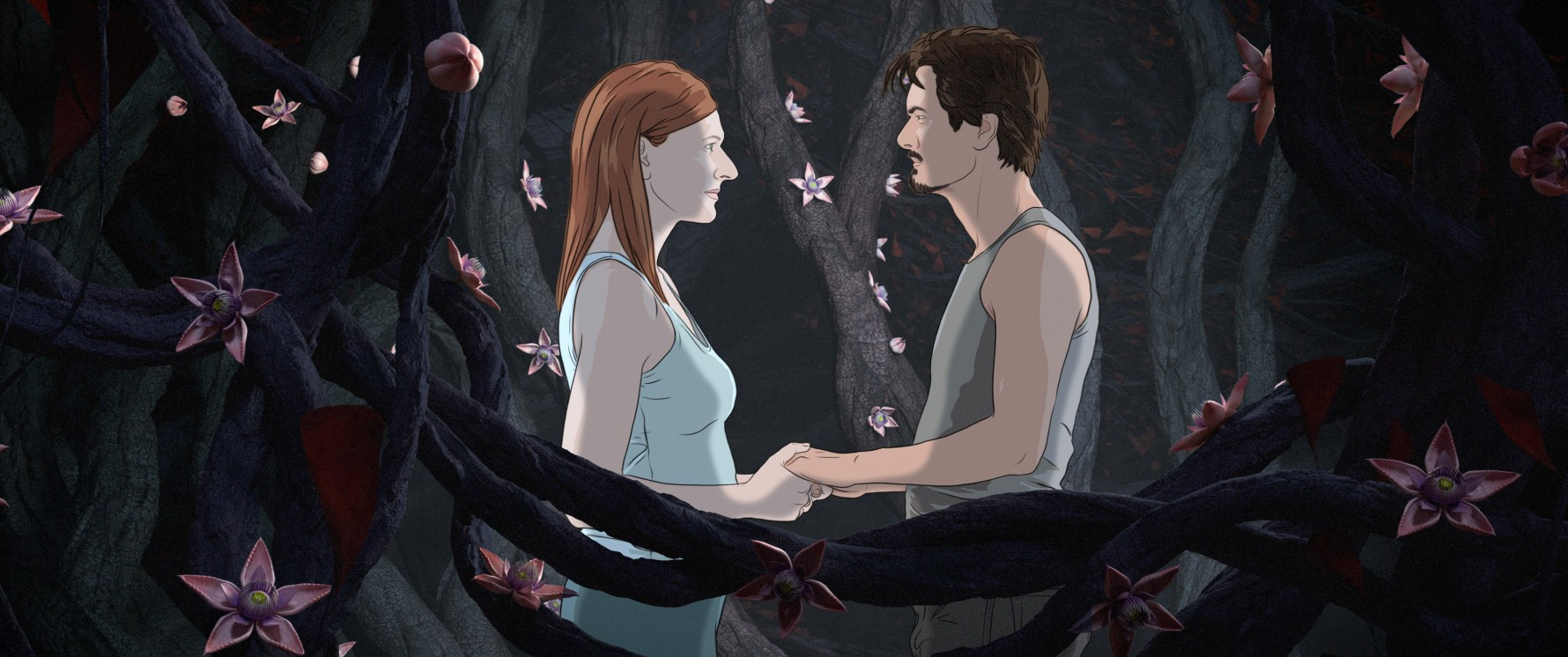
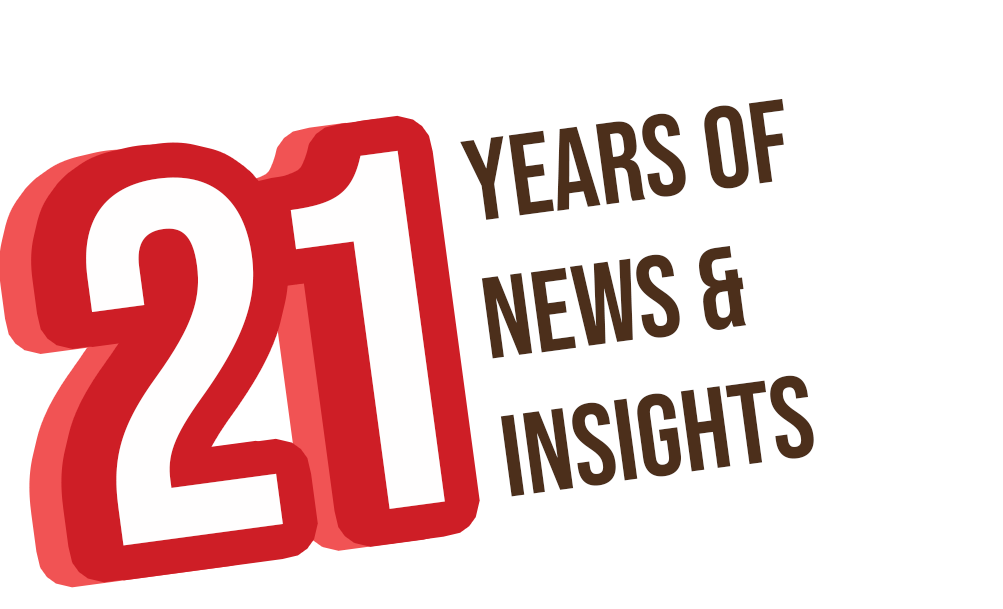
.png)